
Beets, like Brussels sprouts, are loved by a few courageous souls, it is likeable by a beet-conscious crowd and loathed by others.
They are healthy, easy-to-grow vegetables which can bring about a love-hate relationship to the dinner table, that often causes a stir in the most tolerant of households – including those with picky eaters.
Despite all their amazing health benefits and with more than 33 ways to eat beets, how do you get reluctant family members to embrace the goodness of antioxidant-rich red betalain pigments?
Serve them a glass of fermented beet kvass and see what happens. You may just be surprised.
Naturally, you could also introduce this underused vegetable and make spicy beet salsa to go with your Sunday roast. Or you could hide them in Red Velvet beet brownies, but that would be cheating…
If you really want to feel the earthy flavor and love the beets for what they truly are, why not try fermenting them?
You’ll preserve them in their raw state and they will taste great too. Promise.
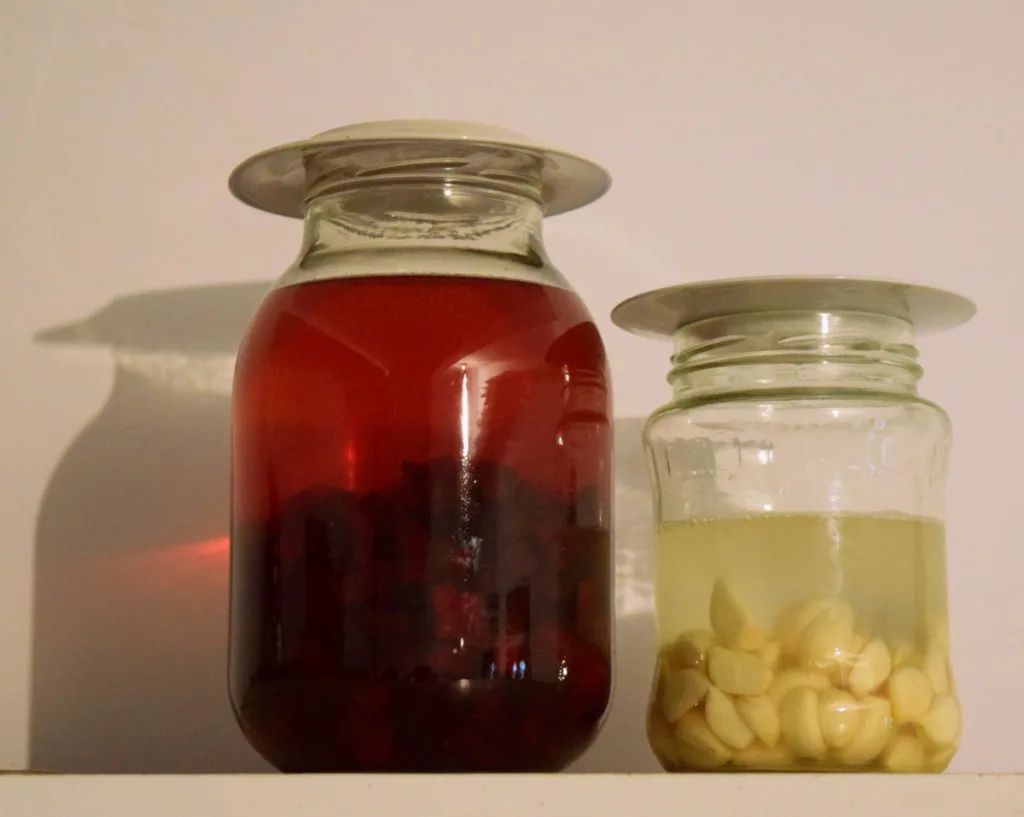
Why make beet kvass?
Beet kvass is a fermented drink that not only looks lovely, it has cleansing properties as well.
It is no less a nutritious supplement to your diet than coconut oil, kombucha or bone broth.
All these so-called “superfoods” have a time and place for boosting your health, though if you really want to be healthy, know that one single glass of vegetable juice is not going to do the impossible. So, make enough kvass at once, to keep your glass full for a couple of weeks.
Then take a short break and resume the process again.
How much kvass should you drink at a time?
Some people say to drink just 4 oz. of beet kvass, while others say an 8 oz. glass is plenty per day. 16 oz. would be way too much!
If you are new to imbibing fermented drinks, start slow with a small glass, and listen to your gut intuition on what feels good for you.
Beet kvass can be taken with or without food.
When drunk as a tonic next to your meal, beet kvass acts as a digestive aid, helping your body break down the rest of the foods you are eating.
The probiotics and enzymes of the fermented drink will allow nutrients to become more bio-available – enabling you to get more out of your meal.
If you choose to drink a cup of beet kvass in the morning on an empty stomach, it will enter your bloodstream within 20-30 minutes, setting your digestion up for the day as it lines your gut with beneficial flora.
Discovering vibrant health is a multi-step approach, and beet kvass can help!
Homemade beet kvass contains gut-friendly probiotics, just as it provides your body with loads of minerals and vitamins.
Beets contain magnesium, iron, phosphorus, calcium, potassium, niacin as well as Vitamins A and C. If you are low on any of those, you may want to start culturing your beets, starting today!
In case you need more reasons to try beet kvass, here come a couple, just to be certain. Beets are chock full of phytonutrients, called betalains that help to alkalize the blood. And that is a good thing, considering all that goes into a modern diet!
Beets also help to cleanse your liver, support your body with folic acid and are all around natural healers.
Are you feeling the inspiration to eat fermented beets yet?
The ingredients are simple, the directions are too.
Ingredients for making beet kvass
All you need to make beet kvass are 3 ingredients, plus a large jar for fermenting. Fermentation weights are optional.
- 3 large beets (or 5-6 small ones)
- 1 gallon boiled water
- salt, for the brine
If you have homegrown beets from the garden, wonderful! But don’t worry, the grocery store will never let you down.
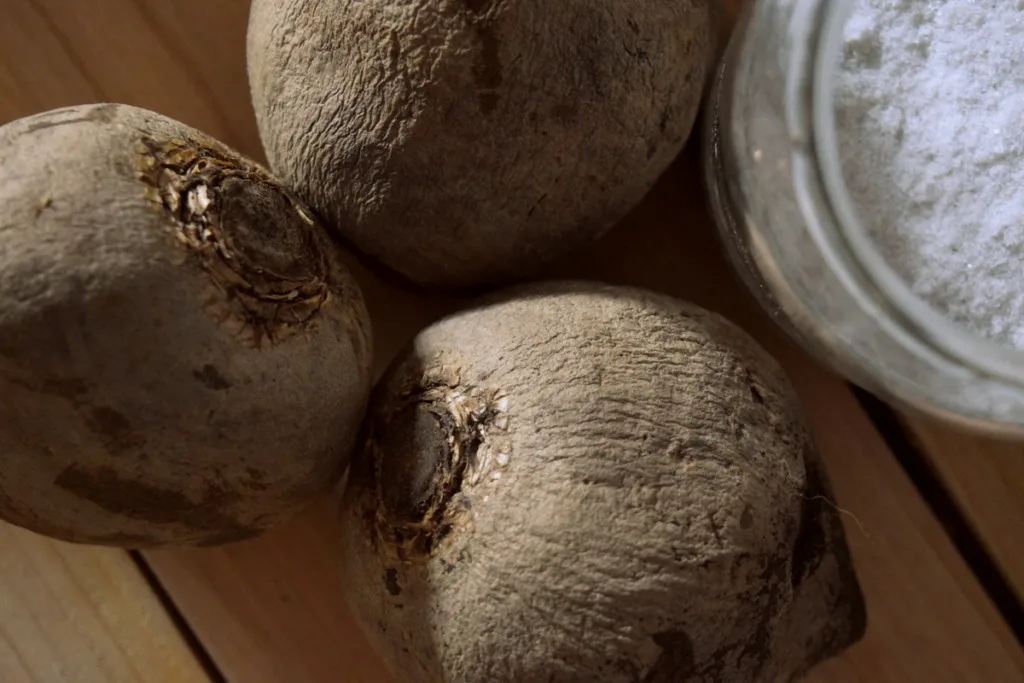
You can also opt for organic beets if you can find them, shop locally and/or find heirloom varieties from a CSA.
You know those Chiogga (candy striped) beets? They sure look pretty, but save them for another recipe where their stripes can truly shine. If you use them in kvass, you’ll be disappointed to find that the colors run, and all you are left with is a red beet…
“It all tastes the same and it all goes to the same place” my mom used to say, but save those special beets for a higher purpose. And use the basics for your perfect kvass.
Simple steps for fermenting beet kvass
If your beets are straight from the garden with fresh greens attached, save those for soups, stews and sautés – they are highly nutritious and perhaps my favorite part of the plant!
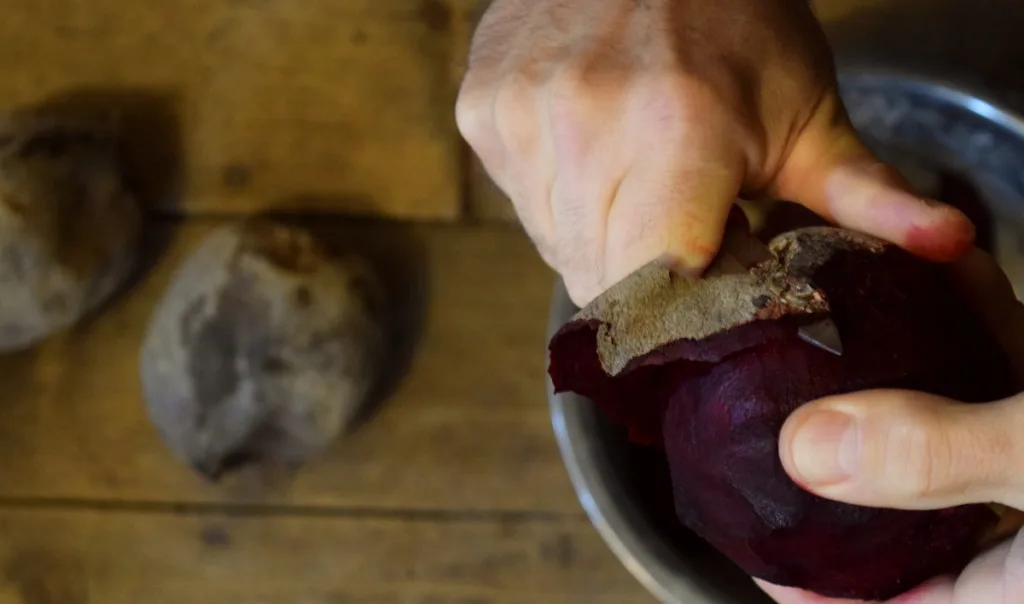
Next step is to peel the beets and roughly chop them into 1 inch pieces. Not any smaller, and not too much bigger. Just right, is what you are after, so that they become a true lactic acid ferment.
Never grate them to make beet kvass, as they will ferment too quickly.
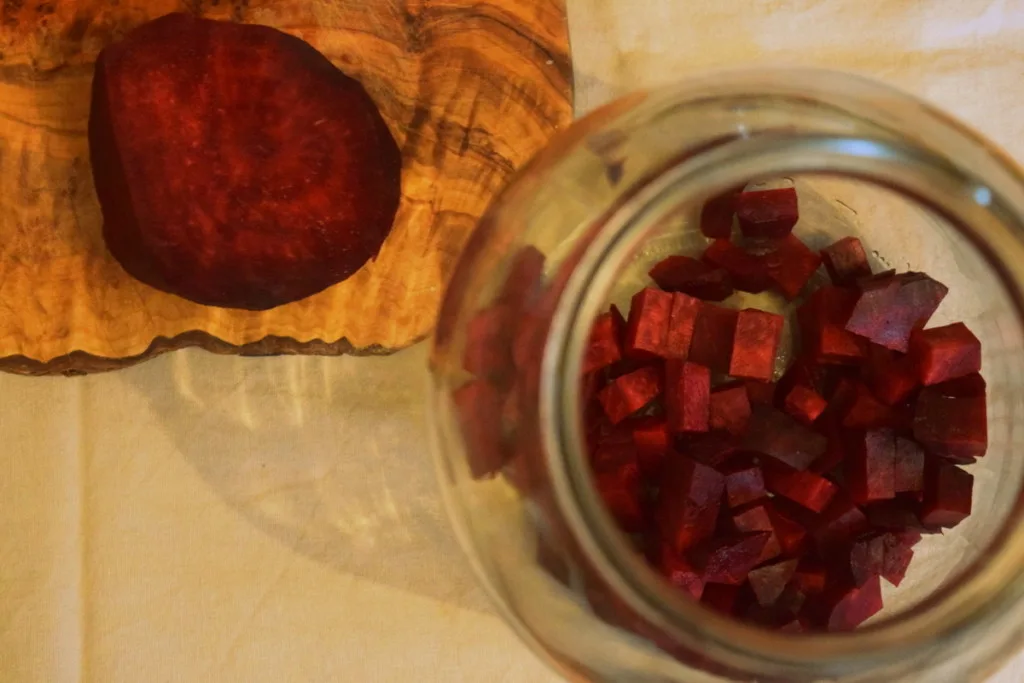
Add the chopped beets to a large clean jar, and cover them with the prepared salty brine. For every 8 cups of water, add 2 tbsp. of salt. You can prepare this ahead of time with pre-boiled and chilled, with filtered or distilled water .
Use a plate or fermentation weights to keep the beets submerged under the water.
Leave the jar of beets to sit for about 5-6 days on the kitchen countertop, somewhere not too warm, not too cold. With fermenting, I find it always best to put a plate underneath the jar, just in case the ferment bubbles over (as it sometimes unexpectedly does!).
If you see white film forming on the surface, remove it with a wooden or stainless steel spoon, tossing it onto the compost. This is harmless, just keep fermenting on.
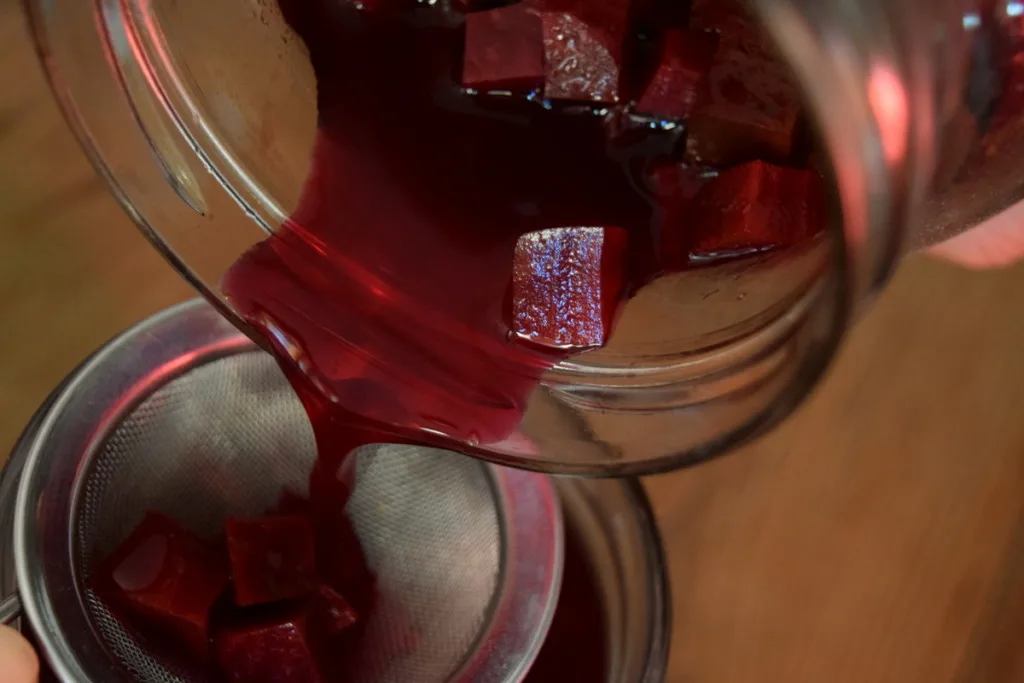
When the 5-6 days of fermentation are up, filter the beet kvass and pour into a clean jar, or reusable glass serving bottles.
From this point on, your job is done!
You can now refrigerate the kvass and drink as you wish, knowing that refrigeration will slow the fermentation process down.
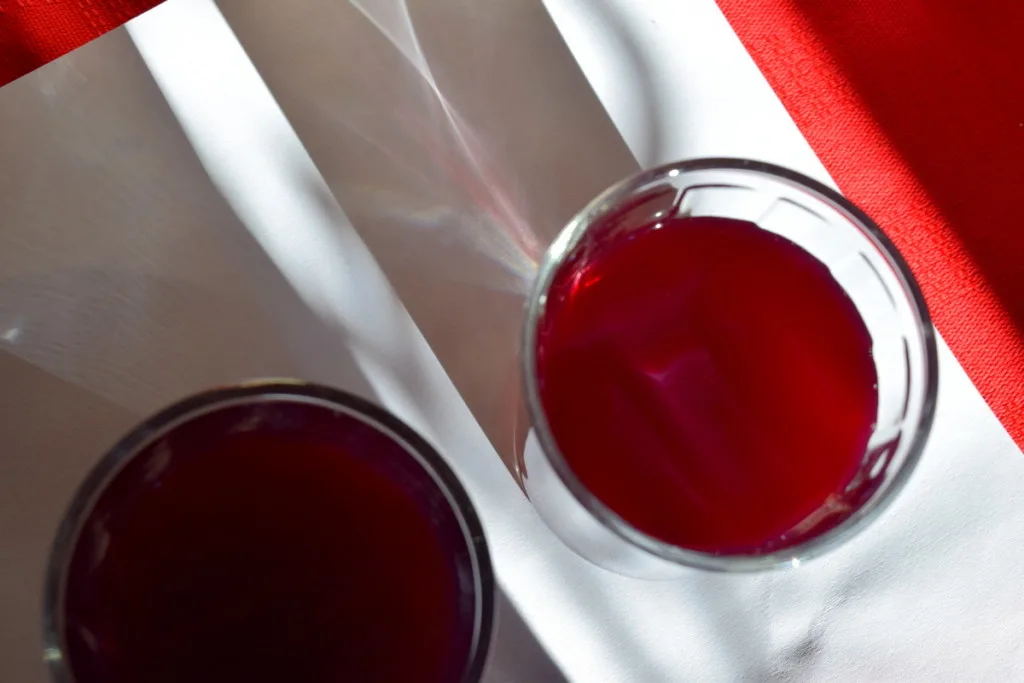
Tips and tricks for making the best beet kvass
Water – chlorinated and tap water can inhibit the fermentation process. Use spring, filtered, distilled or boiled water instead.
Salt – many recipes call for sea salt, we prefer to use mined salt coming from nearby in Praid (Parajd), Romania. Himalayan salt is also an excellent option.
More or less – halve it, double it, triple it. As long as you keep the proportions, your beet kvass will be lovely as ever, though it may take a little longer to ferment.
Speeding up the fermentation – if 5 or 6 days feels too long of a time to wait, go ahead and add some sauerkraut or kimchi juice to the jar of beets in addition to the salty brine. If dairy is an option for you, a couple tablespoons of whey will bring the end results faster.
Zero-waste – now, that you have all of those chunks of beets, do not throw them out – eat them! Add them to stews, eat them raw, steam them and feed them to your pigs or chickens. Do whatever you have to do to keep them from becoming food waste.
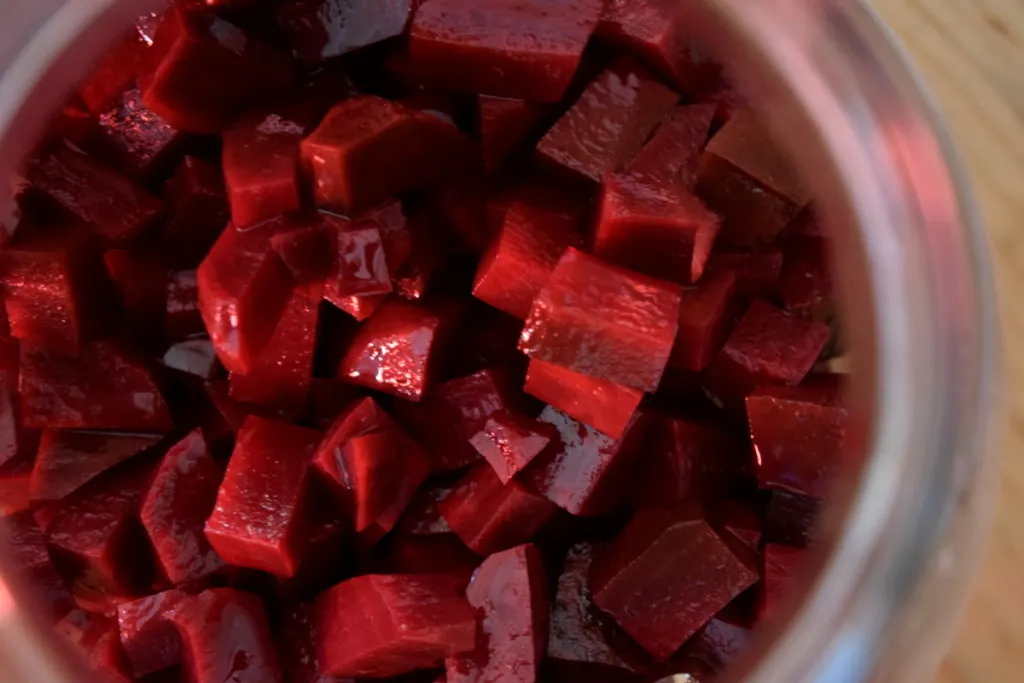
Spice it up – if the beet flavor needs a little encouragement, take the liberty to add organic orange peel, ginger or even bits of dehydrated pineapple!
Now you know how to make beet kvass. When will you start your first, or next batch?
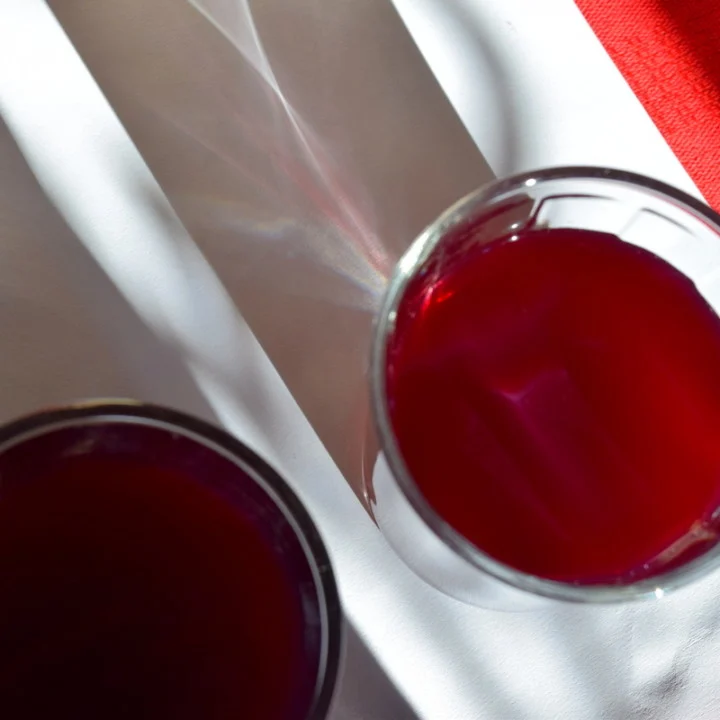
Simple Beet Kvass Without Whey
Beet kvass is a fermented drink that not only looks lovely, it has cleansing properties as well.
Ingredients
- - 3 large beets
- - 1 gallon boiled water
- - salt
Instructions
- Peel the beets and roughly chop into one inch pieces.
- Add the chopped beets to a large clean jar, and cover them with the prepared salty brine. For every 8 cups of water, add 2 tbsp. of salt. You can prepare this ahead of time with pre-boiled and chilled, with filtered or distilled water.
- Use a plate or fermentation weights to keep the beets submerged under the water. Leave the jar of beets to sit for about 5-6 days on the kitchen countertop, somewhere not too warm, not too cold.
- When the 5-6 days of fermentation are up, filter the beet kvass and pour into a clean jar, or reusable glass serving bottles.
- Refrigerate and enjoy.

Get the famous Rural Sprout newsletter delivered to your inbox.
Including Sunday musings from our editor, Tracey, as well as “What’s Up Wednesday” our roundup of what’s in season and new article updates and alerts.

